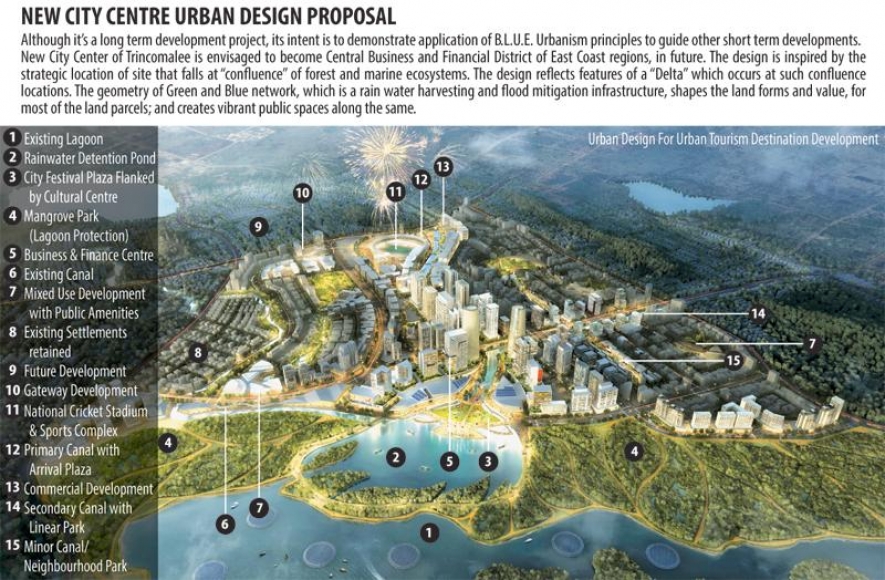The land use aspect covers environmentally sensitive areas and land set aside to meet all needs of projected economic, residential, amenities, and recreational needs.According to the plan Trincomalee would become the ‘Eastern Export Hub’ by creating a clean industrial ecosystem that can add value to the rich agriculture, aquaculture and mineral resources available in its hinterland in the Eastern, North-Central, and Northern Provinces.
Trincomalee would also be repositioned as an ‘Eastern Tourism Hub’ with increased regional connectivity, realised through the Colombo - Trincomalee Economic Corridor development and proposed Hingurakgoda international airport.The plan also recognises Trincomalee as the ‘Eastern Logistics Hub’.
This will be done by attracting its share from growing maritime trade in the Bay of Bengal as well as gains from economic opportunities resulting from Sri Lanka’s Free Trade Agreements with South Asian and South East Asian countries.The development plan for Trincomalee District says it shall also open up growth opportunities for the eastern and northern parts of Sri Lanka in order to contribute to the holistic development of the island.
The detailed land use plan would ensure adequate land is set aside to efficiently serve ‘live-work-play’ needs of future residents while the zoning plan would guide urban development in a sustainable manner.In addition to these, urban design guidelines would shape unique and memorable public spaces.By 2050, Trincomalee is envisioned to become the largest city in eastern Sri Lanka, serving as a magnet for Northern, Eastern, and Central Provinces as an employment, education, healthcare, tourism, and energy hub.Its population is projected to be 1.24 million, supported by 1 million jobs and occupying 300 square kilometres of land.




















